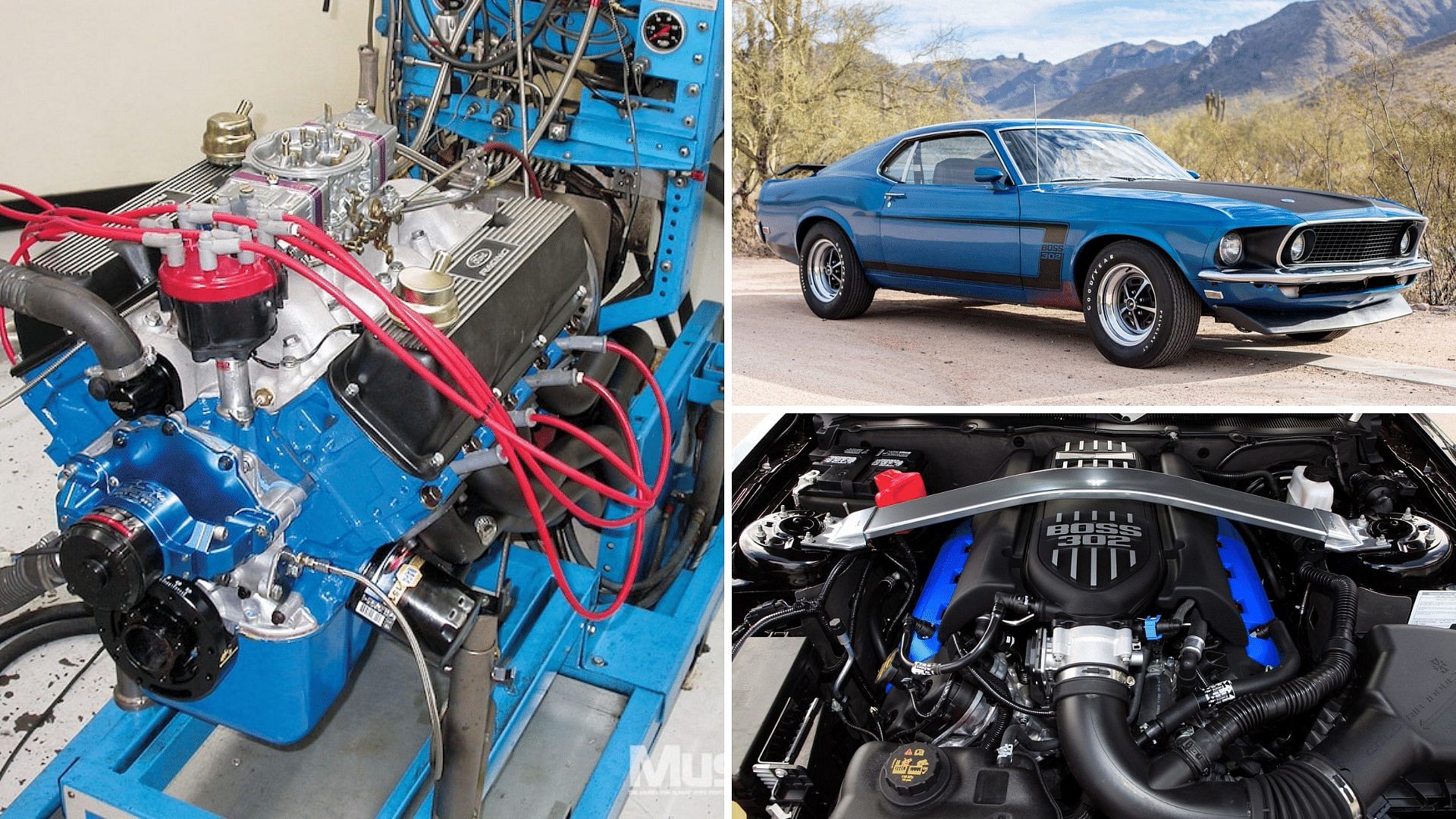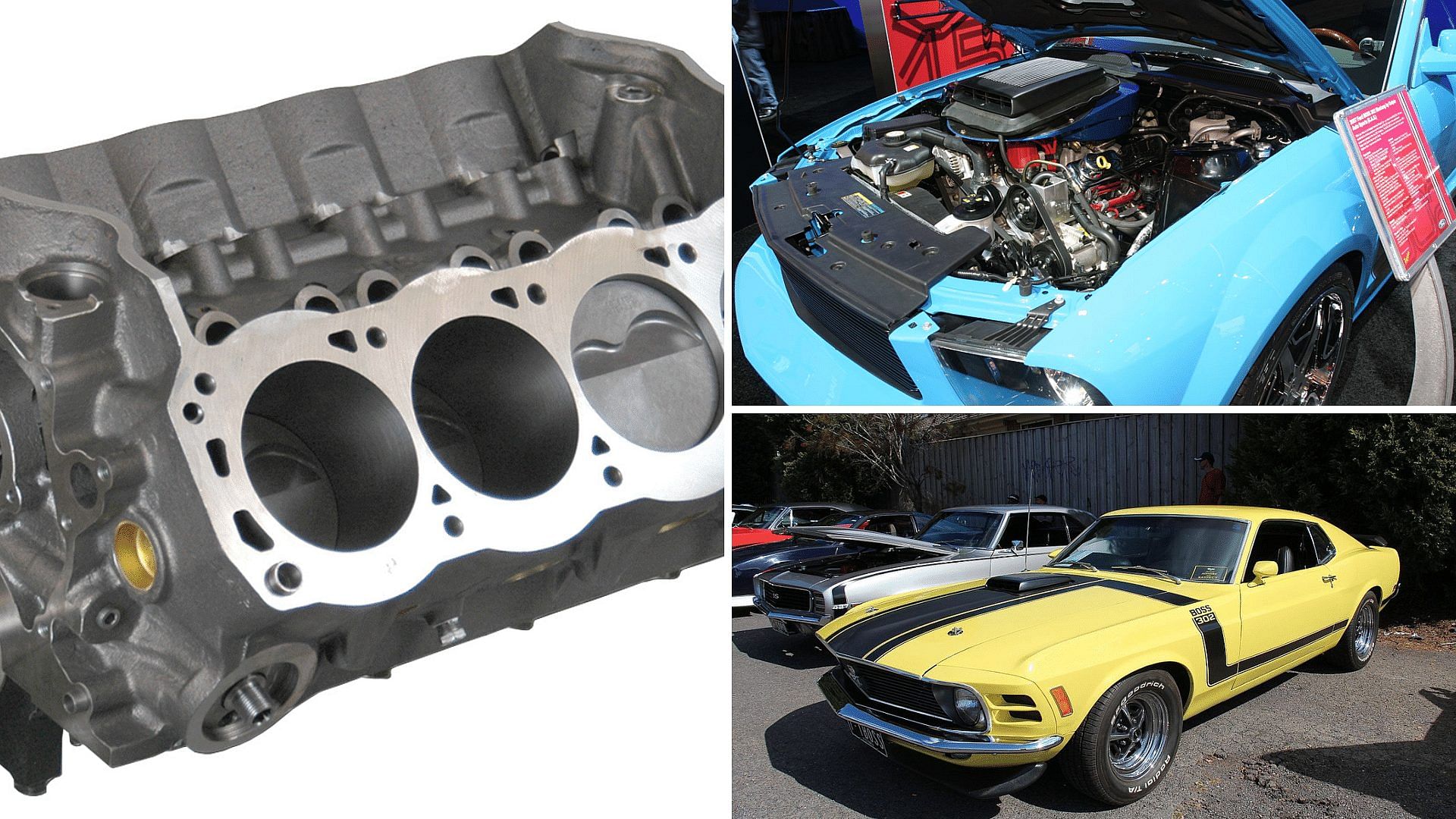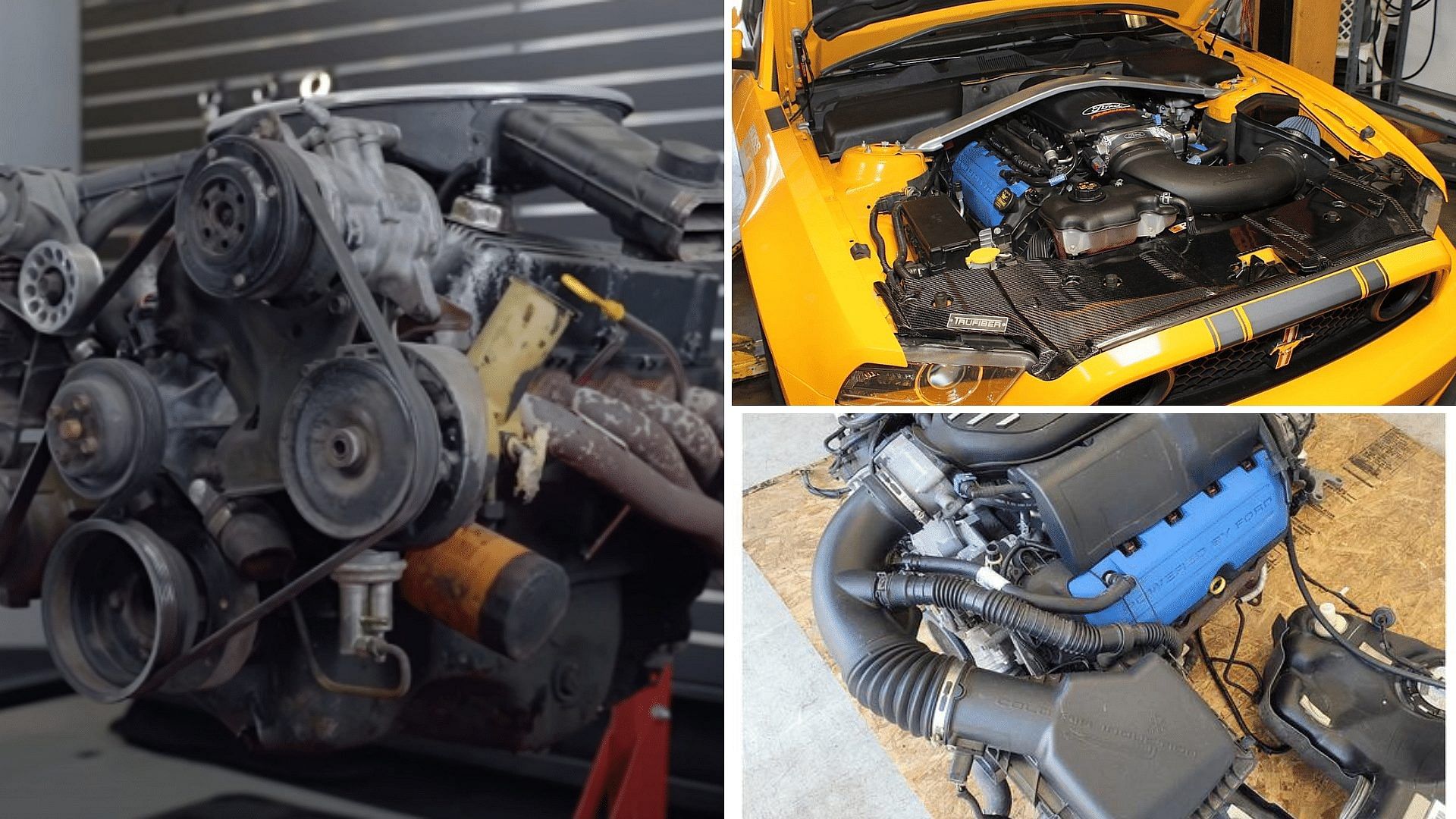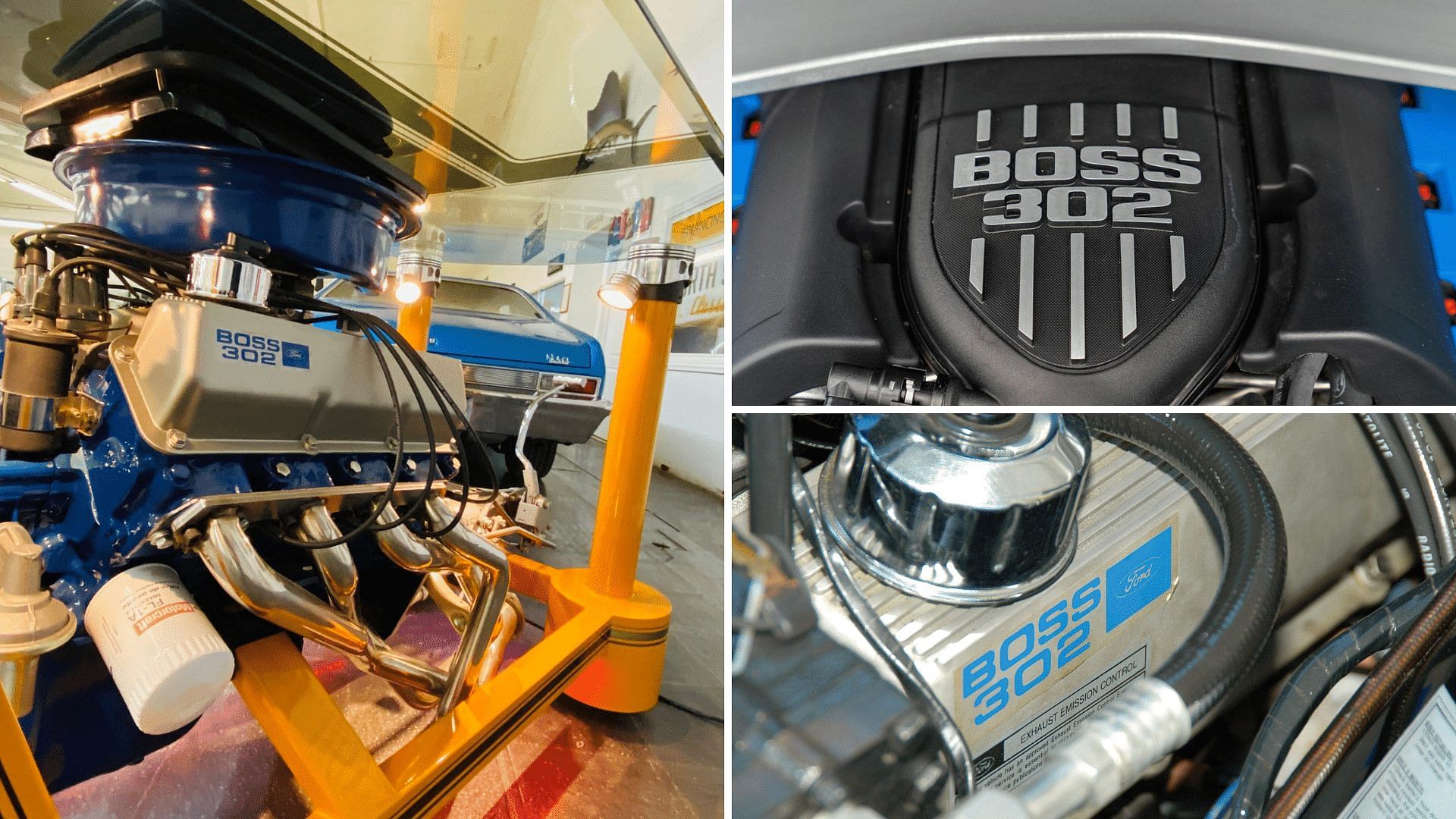The Legendary Boss 302 - Ford's Iconic High-Performance Masterpiece
When we dive into the pages of automotive history, one name consistently emerges as a trailblazer: Ford. Since its inception in the early 1900s, Ford has been synonymous with innovation, including the development of the legendary Boss 302 engine in 1969.
Published August 2, 2024
When we dive into the pages of automotive history, one name consistently emerges as a trailblazer: Ford. Since its inception in the early 1900s, Ford has been synonymous with innovation and a commitment to pushing the boundaries of conventional automotive design.
In this comprehensive exploration, we embark on a journey to unravel the rich history and remarkable engineering behind one of Ford's most iconic creations, the Boss 302 engine.
Debuting in 1969, this revolutionary V8 was born from Ford's racing endeavors and ushered in innovations that changed engine design forever. With its race-tuned components and unbelievable performance, the Boss 302 cemented Ford's reputation for excellence and dominated motorsports for years. This comprehensive history explores the engineering marvels behind one of Ford's most legendary powertrains.
The Birth of a Legend
In the dynamic landscape of 1960s automotive excellence, Ford was far from a passive spectator. It was an era that witnessed the birth of legendary models like the GTO in 1964 and the Mustang in 1965, solidifying Ford's reputation as a pioneering automaker.

However, it wasn't until 1969 that Ford took a monumental leap with the development of the Boss 302, a high-performance V8 powerhouse that would leave an indelible mark on the industry.
Powering Performance
The Boss 302 engine wasn't Ford's initial venture into high-performance powertrains. Before its introduction, Ford had already made waves with the 427 FE Series big-block engine, a formidable force that propelled the limited-edition 1964 Thunderbolt Fairlane to victory in NHRA competitions.
Additionally, the 306-horsepower, 289 cubic-inch high-performance small-block V8 had proven its mettle in the Shelby GT350, going head-to-head with formidable rivals like the Corvette.

However, as the 1968 Trans Am season approached, Ford found itself in a challenging position. Aiming for more victories on the racetrack, they initiated the development of the 302 engine.
Unfortunately, the 1968 season proved to be a setback for the automaker, necessitating a reevaluation of their strategy. This led to the birth of the 351 cubic-inch engine, which made its debut in 1970, building upon the foundations laid by the 289 and the 302.

The Boss 302 engine, born from this endeavor, went on to power the 1969 and 1970 Trans Am series, ultimately establishing its dominance in SCCA competitions. It's worth noting that the engine earned its distinctive "Boss" moniker, thanks to visionary designer Larry Shinoda, as a tribute to Ford's CEO, Bunkie Knudsen.
A Revolution in Design
What truly distinguishes the Boss 302 engine from its counterparts is its revolutionary design. The engine featured four-bolt mains, a canted valve design originally developed for the 351C, and a significantly higher nickel content.
These innovations became standard in the factory-made Boss 302 Mustangs of 1969–70, setting them apart from the regular 302 models. The engine's unique characteristics extended to its intake manifolds, which were taller due to the larger heads.

The intake and exhaust valves measured 2.23 inches and 1.70 inches, respectively, with sodium-filled exhaust valves aiding in cooling. The engine block itself was notably thicker, providing enhanced durability.
To accommodate higher RPMs, the powertrain featured a larger-diameter power steering pulley and the 289's larger alternator pulley, along with a distinctive harmonic balancer.
Performance Innovations
To harness the engine's RPM potential, engineers incorporated 3/8-inch bolts with football-shaped heads, allowing the Boss 302 to achieve higher redlines. An RPM limiter was also included to safeguard warranties.
Pushrod stability was ensured through the development of pushrod guide plates and screw-in rocker studs. The Boss 302 engine boasted eight cover bolts, as opposed to the standard 302's six.

It shared connecting rods with the 289, all carrying the signature C3AE-D. The crankshaft was cross-drilled for added stability, while the cam featured an impressive.477 inches of lift.
Fuel delivery was handled by a Holley 780 cfm manual choke carburetor, ingeniously isolated from the intake's heat by a phenolic spacer. The engine employed smaller 14-mm AF 32 Autolite spark plugs, fitting perfectly into its larger port heads.
Dominating the Competition
The Boss 302 engine left an indelible mark with its astonishing performance. Generating a formidable 290 horsepower at 5,200 rpm and 290 lb-ft of torque at 4,300 rpm, it possessed a rev range that could peak at 6,250 rpm. This powerhouse could confidently compete with other renowned small blocks like the Chrysler 340 and the Chevrolet 302.

Beyond its sheer power, the engine's harmonious design, featuring genuine lifters, made it a favorite not only in the Trans Am series but also as an optional feature in the Mercury Cougar Eliminator, with over 500 examples produced.
In 2012, Ford reintroduced the Boss 302 engine for the Ford Mustang, cementing its legacy as an enduring symbol of Ford's commitment to performance excellence.
Conclusion
In the realm of high-performance engines, the Boss 302 stands as a testament to Ford's unwavering pursuit of excellence.
Its groundbreaking design and exceptional power output have left an indelible mark on automotive history. As we reflect on the legacy of this iconic engine, we can't help but marvel at the audacious spirit that has defined Ford throughout its storied history.
Write a comment
Comments
No Comments Yet
Trending

Know All The Exceptional Features of the 2010 Chevrolet Camaro RS/SS HTR750
Joshua Burnett
August 5, 2024

The Upcoming Tesla Model 2 Is Destined To Become The Next King Of Budget EVs
Joshua Burnett
August 5, 2024







